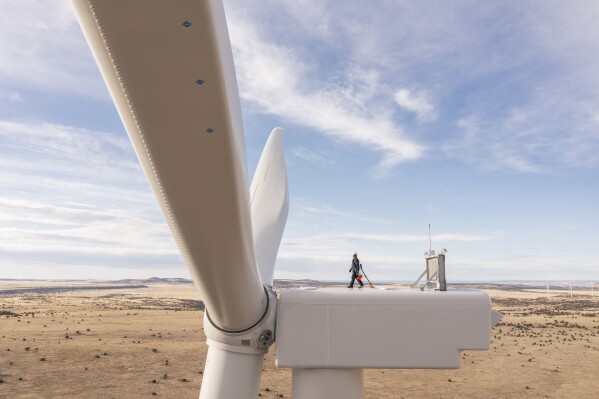Researchers identify a fossil unearthed in New Mexico as an older, more primitive relative of T. rex
ALBUQUERQUE, N.M. (AP) — Researchers have identified a new subspecies of tyrannosaur thought to be an older and more primitive relative of the Tyrannosaurus rex.
A team of paleontologists and biologists from several universities and the New Mexico Museum of Natural History and Science announced their findings Thursday during a gathering at the museum, saying the discovery reshapes ideas about how T. rex first came to be in what is now North America by introducing its earliest known relative on the continent.
Their work was based on a partial skull unearthed years ago in southern New Mexico. They reexamined the specimen bone by bone, noting differences in the jaw and other features compared with those synonymous with the well-known T. rex.
“The differences are subtle, but that’s typically the case in closely related species. Evolution slowly causes mutations to build up over millions of years, causing species to look subtly different over time,” said Nick Longrich, a co-author from the Milner Centre for Evolution at the University of Bath in the United Kingdom.



The analysis — outlined Thursday in the journal Scientific Reports — suggests the new subspecies Tyrannosaurus mcraeensis was a side-branch in the species’s evolution, rather than a direct ancestor of T. rex.
The researchers determined it predated T. rex by up to 7 million years, showing that Tyrannosaurus was in North America long before paleontologists previously thought.
“New Mexicans have always known our state is special; now we know that New Mexico has been a special place for tens of millions of years,” said Anthony Fiorillo, a co-author and the executive director of the museum.
With its signature teeth and aggressive stature, T. rex has a reputation as a fierce predator. It measured up to 40 feet (12 meters) long and 12 feet (3.6 meters) high.
With no close relatives in North America, co-author Sebastian Dalman wanted to reexamine specimens collected from southern New Mexico. That work started in 2013 when he was a student.
“Soon we started to suspect we were on to something new,” Dalman said in a statement.
He and the other researchers say T. mcraeensis was roughly the same size as T. rex and also ate meat.
Thomas Richard Holtz, a paleontologist at the University of Maryland who was not involved in the study, said the tyrannosaur fossil from New Mexico has been known for a while but its significance was not clear.
One interesting aspect of the research is that it appears T. rex’s closest relatives were from southern North America, with the exception of Mongolian Tarbosaurus and Chinese Zhuchengtyrannus, Holtz said. That leaves the question of whether these Asian dinosaurs were immigrants from North America or if the new subspecies and other large tyrannosaurs were immigrants from Asia.
“One great hindrance to solving this question is that we don’t have good fossil sites of the right environments in Asia older than Tarbosaurus and Zhuchengtyrannus, so we can’t see if their ancestors were present there or not,” Holtz said.
He and the researchers who analyzed the specimen agree that more fossils from the Hall Lake Formation in southern New Mexico could help answer further questions.
Disclaimer: The copyright of this article belongs to the original author. Reposting this article is solely for the purpose of information dissemination and does not constitute any investment advice. If there is any infringement, please contact us immediately. We will make corrections or deletions as necessary. Thank you.






